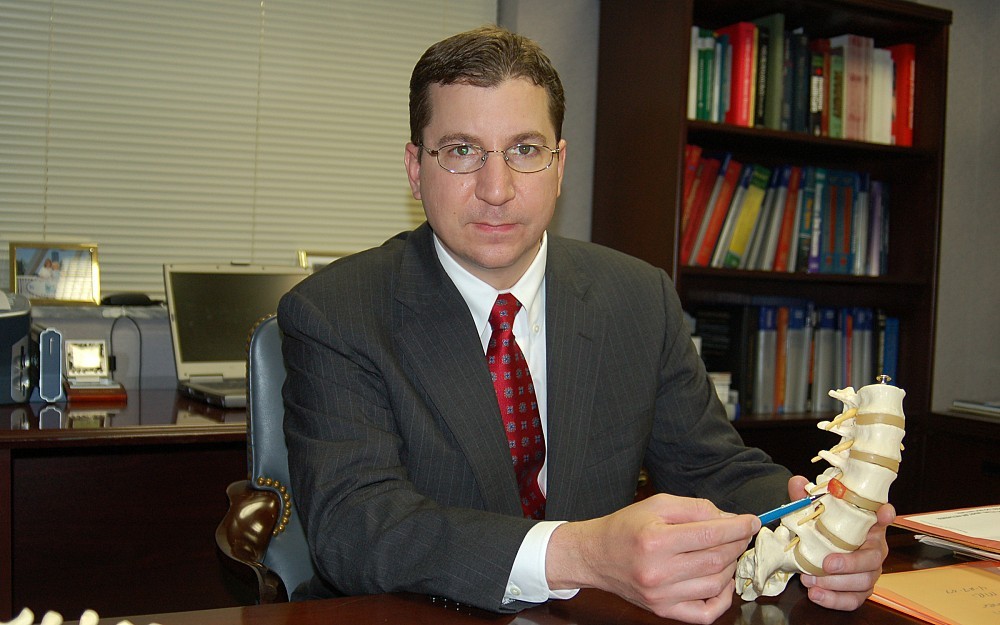
UC HEALTH LINE: 'Sciatica' Isn't Serious, but the Pain Can Be
CINCINNATIIts variously described as a tingling, burning, stabbing, cramping or throbbing pain that radiates from the back or buttock area down the leg to the knee, calf or foot. It can be as intense as a toothache and as debilitating as a headache that just wont go away.
A common condition known as sciatica, the pain originates in the sciatic nerve, which runs down the whole length of the leg.
In general, sciatica isnt serious, says Robert Bohinski, MD, PhD, assistant professor of neurosurgery at the University of Cincinnati and a neurosurgeon with the Mayfield Clinic. With proper care and a good dose of patience, he says, nine out of 10 cases will resolve on their own within five to six weeks.
Sciatica isnt a worrisome symptom, and doesnt need to be immediately reported to your doctor, he says. It should be treated with a period of activity modification for five to seven days, including one to two days of rest, followed by gentle range-of-motion exercises of the trunk and lower extremities. Over-the-counter anti-inflammatory medications also can provide relief.
But if symptoms are at any point intolerable, Bohinski adds, the patient should contact a spine care provider or a primary care physician.
Conditions most likely to be confused with sciatica are hip and knee pain, which can also cause sharp, stabbing pain to radiate into the leg.
Warning signs that sciatica is a symptom of a serious condition requiring immediate attention, and possible surgery, include unbearable pain, significant muscle weakness or paralysis in the lower extremities, or loss of bladder or bowel control.
Sciatica occurs when a sciatic nerve root in the lumbar (lower) spine becomes pinched or irritated. This can happen when a disc, the protective cushion between each vertebra, protrudes or ruptures and presses on the nerve. It can also occur when the nerve becomes inflamed after being stretched or compromised, or when the disc tears and releases chemicals that cause inflammation.
It most commonly happens spontaneously, with no known cause, Bohinski says. People usually think some injury is involved, but a definite or distinct injury or event accounts for only one in 10 cases of sciatica. If there is a described event, it usually involves strenuous lifting or twisting, or an automobile accident or fall.
In most cases, sciatica symptoms resolve spontaneously when the offending disc material recedes or dries up.
How much time a patient should wait before seeking medical attention varies. It depends on how much the patient is suffering and whether or not theres an additional finding, such as leg weakness, muscle atrophy or intolerable pain, Bohinski says.
If a patient experiences severe pain, one of the first treatments is a short course of oral corticosteroids, followed by other conservative care, including a structured lumbar physiotherapy program guided by a trained therapist.
A patient who hasnt responded to conventional treatment within two to six weeks should undergo an MRI scan to determine whether a herniated (ruptured) disc is causing the sciatica, Bohinski says. In rare cases, a cyst or tumor is the cause.
Semi-surgical approaches to relieving sciatica are performed today with increasing frequency. An injection of corticosteroid into the epidural space, next to the disc herniation and irritated nerve, can cure the condition if it reduces inflammation sufficiently to allow the herniated portion of the disc to retract or dry up.
In a condition known as a contained herniation, in which the bulging disc remains inside the outer disc membrane, surgeons can perform what is called a percutaneous needle decompression. During the procedure, a needle is inserted into the disc and a small volume of the internal portion is removed, allowing the herniation to draw back into its proper space.
In the 10 to 20 percent of cases in which symptoms of sciatica cannot be resolved by non-surgical interventions, lumbar microsurgery can be performed through an incision less than an inch long. Such procedures can be performed on an outpatient basis and may take only 30 to 60 minutes to complete. Patients usually can return to a light-activity job within one week of surgery and to full activity within four to eight weeks.
For information about exercises helpful to sciatica sufferers, log on to Exercises for a Healthy Back at http://www.mayfieldclinic.com/pe-exer.htm.

Sciatic nerves
Tags
Related Stories
Donors drive record-breaking support for UC and UC Health
July 22, 2025
Generous donors have propelled the University of Cincinnati and UC Health to a historic fundraising year, contributing an unprecedented $228,479,079 in support.
UC students help to organize weekend medical clinic held at...
July 21, 2025
Thanks to a collaborative effort among Remote Area Medical Volunteers Corps, the University of Cincinnati's student chapter of RAM and Anthem Blue Cross and Blue Shield, Tristate residents had access to free medical care this weekend — no questions asked.
New global trial testing oral therapy for MS spasticity
July 21, 2025
The University of Cincinnati's Shahla Hosseini, MD, PhD, was featured in a Multiple Sclerosis News Today article discussing a new international clinical trial testing an oral drug that enhances naturally occurring molecules in the body to help muscles relax as a treatment for spasticity in patients with MS.
